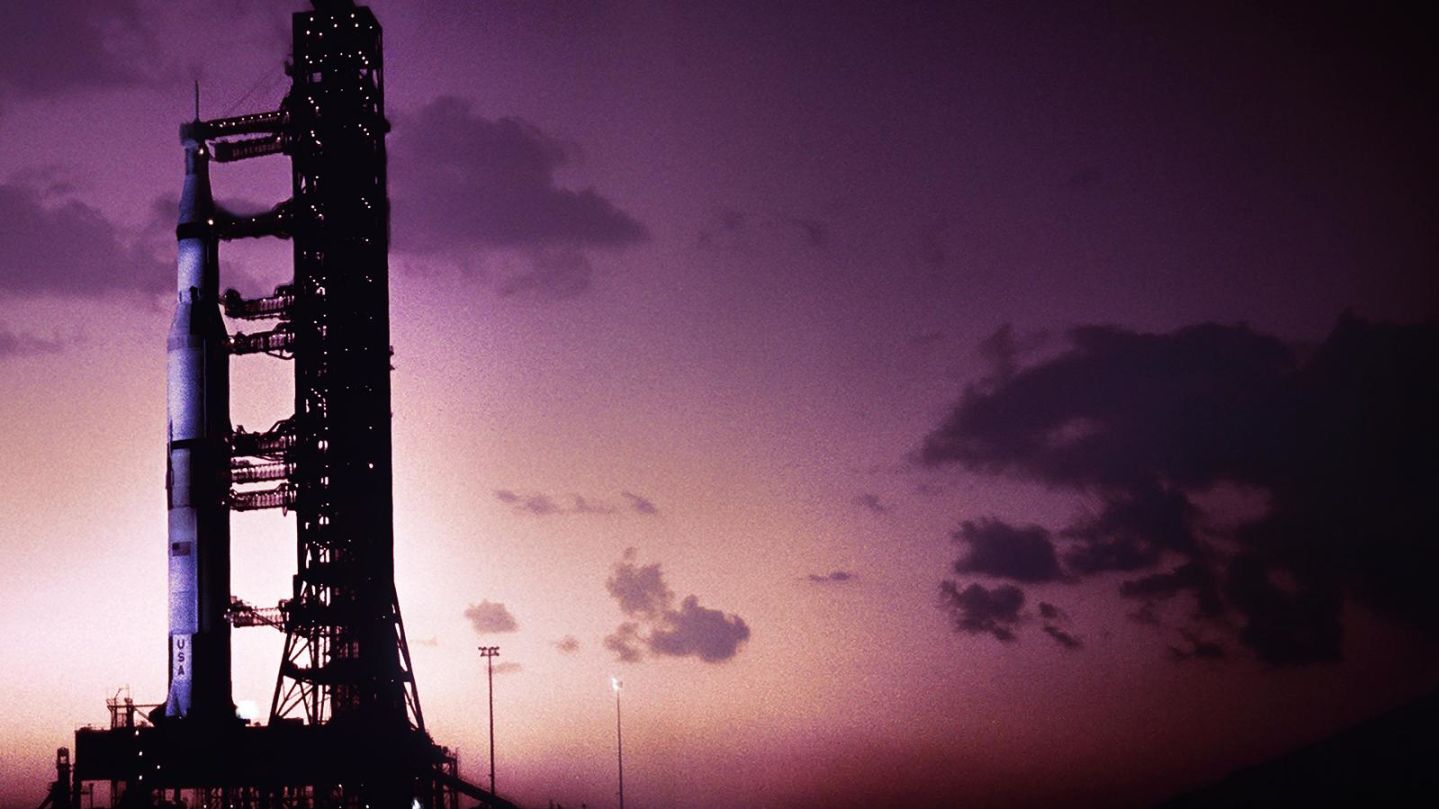CNN Films’ “Apollo 11” explores humanity’s first moon landing through newly discovered and restored archival footage. Watch Saturday, July 20, at 9 p.m. ET.
After retiring from NASA in 1994, Gene Kranz remembers taking tours through the historic Mission Operations Control Room at Johnson Space Center in Houston.
Kranz was the flight director during the Gemini and Apollo missions (he’s played by Ed Harris, sporting a lucky white vest, in the film “Apollo 13”). And returning to “the room where it happened” – some Apollo-era controllers now use the “Hamilton” song to refer to Mission Control – should have brought back fond memories.
Instead, Kranz had to remove water bottles and empty wastebaskets from the consoles after the tours. Yellow duct tape held the carpet together. People had taken souvenirs from the consoles and buttons were missing. As time passed, younger generations thought the ash tray holders attached to the seats in the viewing room, where families of astronauts and dignitaries once sat during missions, were for cellphones.
Kranz realized it wasn’t right, he said during a speech at Johnson Space Center on June 28. A team of Apollo flight controllers and directors, including Kranz and Ed Fendell, worked with a conservation team over the last five years to restore Mission Control down to the last detail. Cigarette butts found when the carpet was ripped up were cleaned and placed back in their ashtrays that litter the consoles.
Now, when Kranz walks back in the room, he feels 50 years younger. He wants to take his coat off, hang it on the rack where it always went, and get back to work. When he steps back in the room and gazes at the consoles, Kranz says he can hear the voices that used to fill the room.
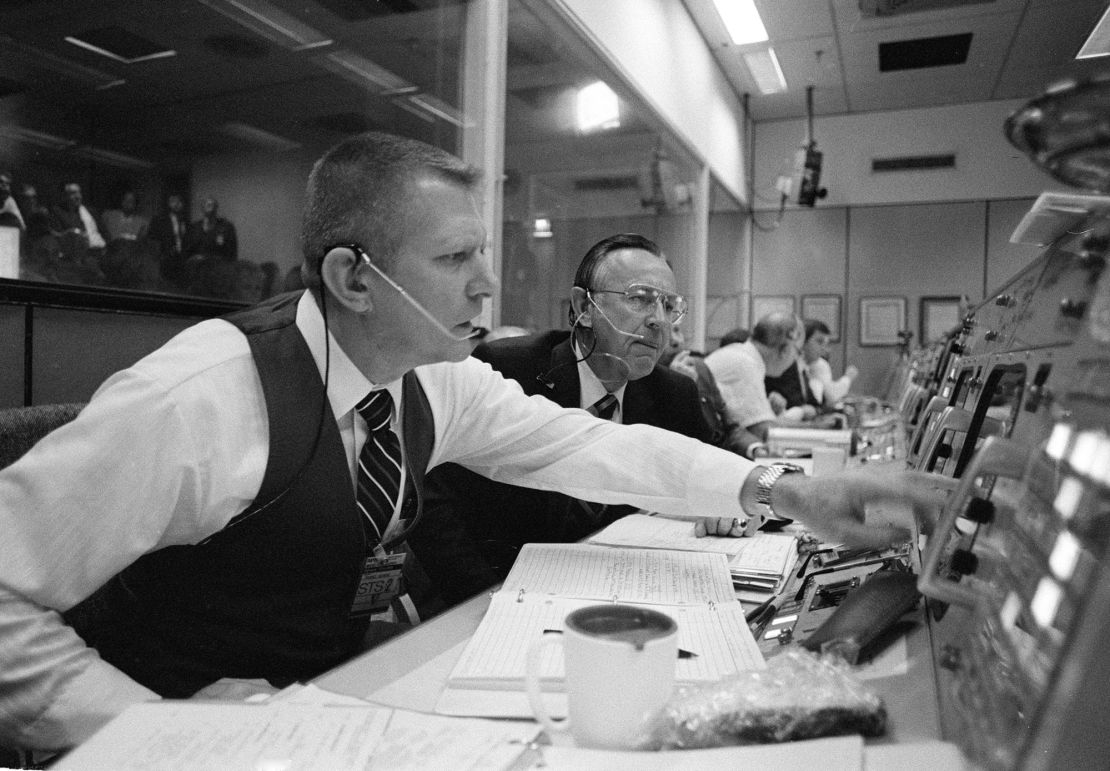
Voices like that of Chris Kraft, director of mission operations, directing astronaut Ed White to get back in the Gemini 4 capsule during the first spacewalk. Others asking the Apollo 11 astronauts to give a reading on the program alarm that went off during the lunar landing. And he can still hear the Apollo 8 astronauts reading from the book of Genesis on Christmas Eve.
Back then, smoke covered the air. The cigar aroma was so strong that their wives thought they had been at the bar when they came home from work. Mission Control’s air ducts were black with coal tar from the cigarettes, and replaced during the restoration.
Mixing with the cigarette smoke was the smell of coffee that overflowed from its pot and burned on the plate by the hallway door. It mixed with the smell of banana peels and empty boxes of fried chicken and pizza in the wastebaskets.
“But this is our home, this is our Mission Control, it’s the battle ground of the space race,” Kranz said in his speech. “Here is the place where we won the high ground, we set the records and returned every crew we launched. Before it became a catch phrase, we had the crew’s back. We were the teams proud of our team colors. Over the missions we became brothers in a cause. It didn’t matter where we worked – in the control rooms, support staff, back rooms, simulators, batcave or computing complex. We’re the ones with our crews who carried our nation’s flag to the moon. It was our crusade, the pledge we made to President John F. Kennedy and astronauts Ed White, Roger Chaffee and Gus Grissom. This room is our Mission Control.”
Joining the space race
Two men landed on the moon for the first time and one man orbited it on July 20,1969, but the full triumph of Apollo 11 also includes the 400,000 people that supported the mission across the country. And as Kranz said, they didn’t all fit in the small room known as Mission Control.
“That room is the tip of an extremely large iceberg,” said Bill Reeves, a flight controller supporting the lunar module during the mission. Reeves was in one of the staff support rooms during the mission.
Everyone who could possibly be needed or called upon during the mission was in a room at Cape Canaveral or Houston. They each had a specific task. And they all wanted to be there.
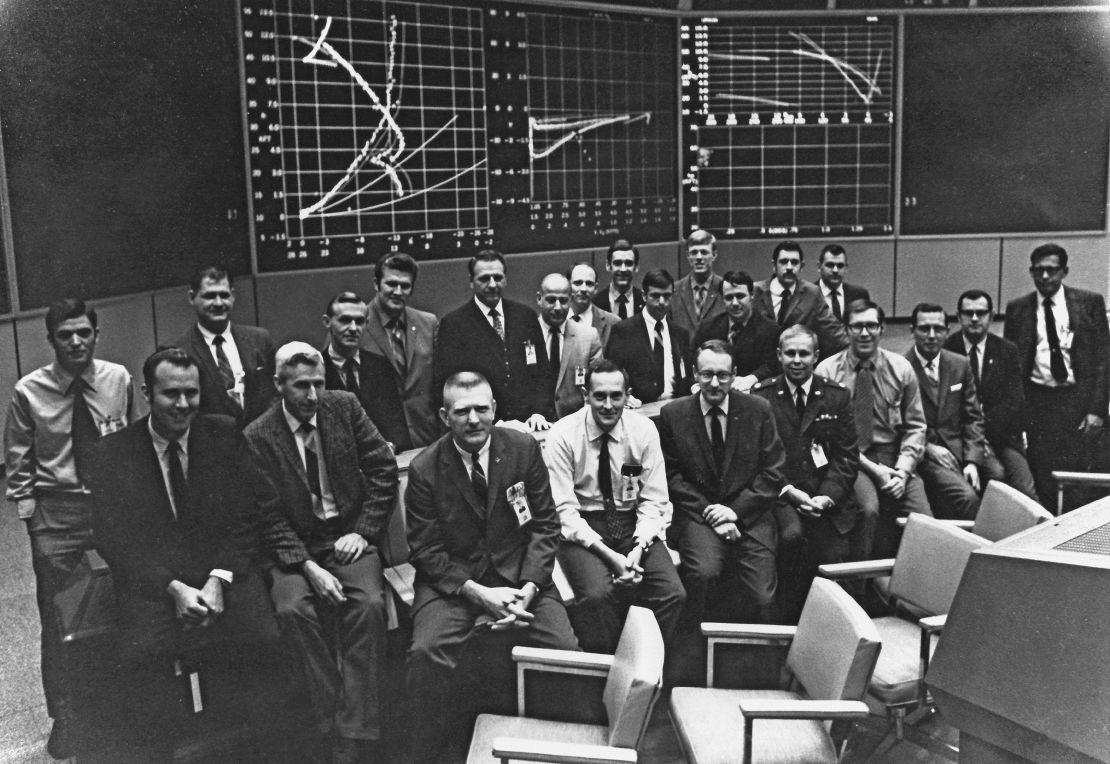
“I think one of the things that people don’t see from movies is that they don’t see all of the people that are involved,” said Spencer Gardner, Apollo flight activities officer. “We had people standing by if we needed to check something or run simulations before we gave procedures to crew.” Gardner was 26 years old when he sat in the control room to the right of Kranz, and was often referred to as his “right hand man.”
When Kennedy gave his speech about reaching the moon before the end of the decade, it created a spark in people across the country. Young college graduates flocked to NASA, and the agency was hiring “every engineer that walked in the door,” said Ed Fendell, instrumentation and communication officer during Apollo.

GPAs and university names didn’t matter. “They wanted to know, ‘did you graduate?’” said Glynn Luney, flight director throughout the Gemini and Apollo programs. “They selected themselves to come here.”
Jerry Bostick had accepted a job out of college to work for Boeing when a NASA recruiter convinced him otherwise. He became a structural engineer at NASA’s Langley Research Center, but quickly learned he didn’t really enjoy research at all. Bostick was attempting to join the manned spaceflight group when he ran into Chris Kraft.
“Why do you want to come work for us?” Kraft asked.
“Well unfortunately, I’ve learned that I’m not suited for research, I want to work on real problems,” Bostick said.
Kraft said, “Hell, hire him. We may need somebody to survey the moon one of these days.”
Bostick became the leader of the flight dynamics team, sitting on the first row in the control center – known as “the trench.” His team acted as the ground pilots for manned spaceflight, tracking the spacecraft and calculating maneuvers.
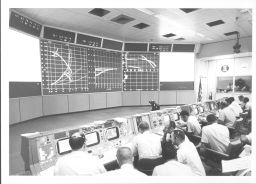
Bill Carpentier was a senior in medical school when he heard Kennedy’s speech. He knew he wanted to be part of this space race, but there was one issue – he lived and went to school in Canada. Carpentier secured an internship at a university hospital to set himself on a path that would lead to NASA. They were looking for people to join their aerospace medicine team and Carpentier was needed.
He became the flight surgeon assigned to the Apollo 11 flight crew.

During the Mercury program, post-flight heart rate increased and blood pressure decreased, causing some of the astronauts to feel faint. There was concern that longer spaceflights could lead to larger problems.
NASA needed a flight surgeon to fly in the recovery helicopter with the underwater crew that would retrieve the astronauts from the ocean after splashdown. And if medical care was required, the flight surgeon would need to jump in the water as well. He would also conduct the post-flight examinations.
“For a young guy, there couldn’t be a better place to be in the entire world than there,” he said. “Other than being an astronaut, I had the best job in the country.”
Mission control, from the Cape to Houston
Years of hard work, tense moments and the tragic failure of Apollo 1 led up to Apollo 11. For all of the young people who had wanted to see Kennedy’s vision through, it was a time of excitement but intense focus.
“It was a can-do attitude,” Bostick said. “We were very sober and somber in what we were doing. We took it very seriously. We worked very hard. But at the same time it was fun, we really didn’t think of it as a job, even though we were working twelve hours a day at least, six days a week. We didn’t understand the magnitude of what we were doing, the gee-whiz aspects.”
As flight dynamics officer, Bostick had the abort switch on his console. He could stop the launch if necessary. But he never took the cover off the button. He didn’t want to bump it accidentally. He would practice how long it would take to remove the cover and pull the switch during simulations. And Bostick was grateful he never had to do it for real. It threw into focus how serious all of their jobs really were.
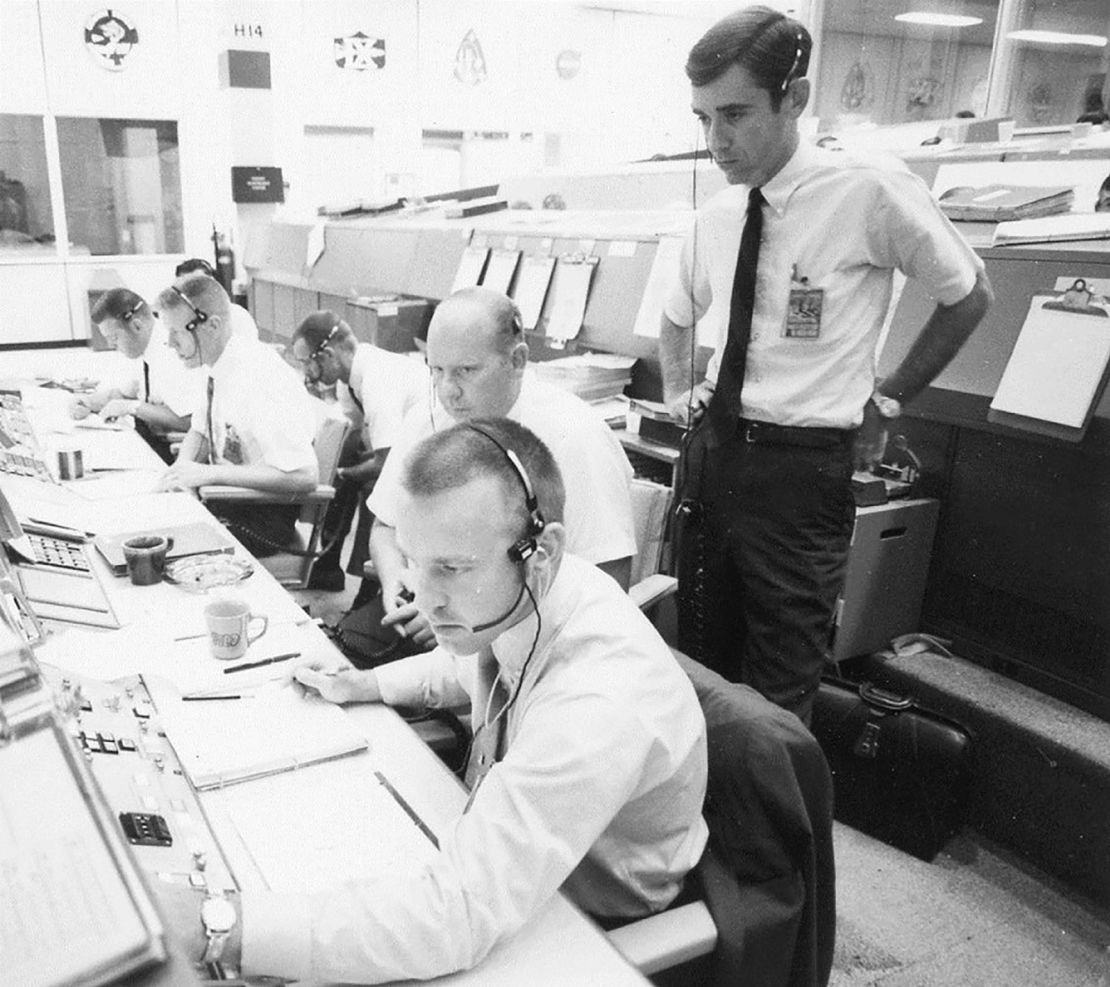
People moved back and forth between working at Cape Canaveral and Houston over the years. Sitting in the control center at the Cape, they could feel the launch beneath their feet. But the display system at Houston was better.
JoAnn Morgan, an instrumentation controller and the only woman sitting inside the firing room at the Cape during Apollo 11, said the tension was palpable on launch day.
“The room quieted down once the flight crew came out,” she said. “We had a nice quiet countdown. It was the end of a five-year period of intense work. But you’re not relaxed until that final engine cut-off. For some folks, our jobs would end because Houston was in control from then on. Then, we got ready for more launches.”
In Houston, things were just getting started. The rooms were packed as the Apollo 11 crew approached the moon. Everyone who could find a place to plug in a headset was listening. People sat on steps if they couldn’t find a seat.
Every flight controller in the room remembers the tense call-outs as Armstrong navigated the lunar lander, running dangerously low on fuel and trying to avoid landing on boulders. You could’ve heard a pin drop, they all say.
“Those last few minutes right before the landing was a special time,” said Gerry Griffin, Apollo flight director. “When they actually did touch down, you could hear it or feel kind of a relief.”
Fendell, who admits to this day that he didn’t think it would be possible to land a man on the moon by 1969, was so engrossed in the landing that he felt like he was floating when it happened.
“When I look back at it, it almost felt like I was levitating. In other words, I was in my chair, but I wasn’t touching anything because I was so absorbed in what I was listening to,” Fendell said. In his headset, he could hear the crew and about five other teams talking.
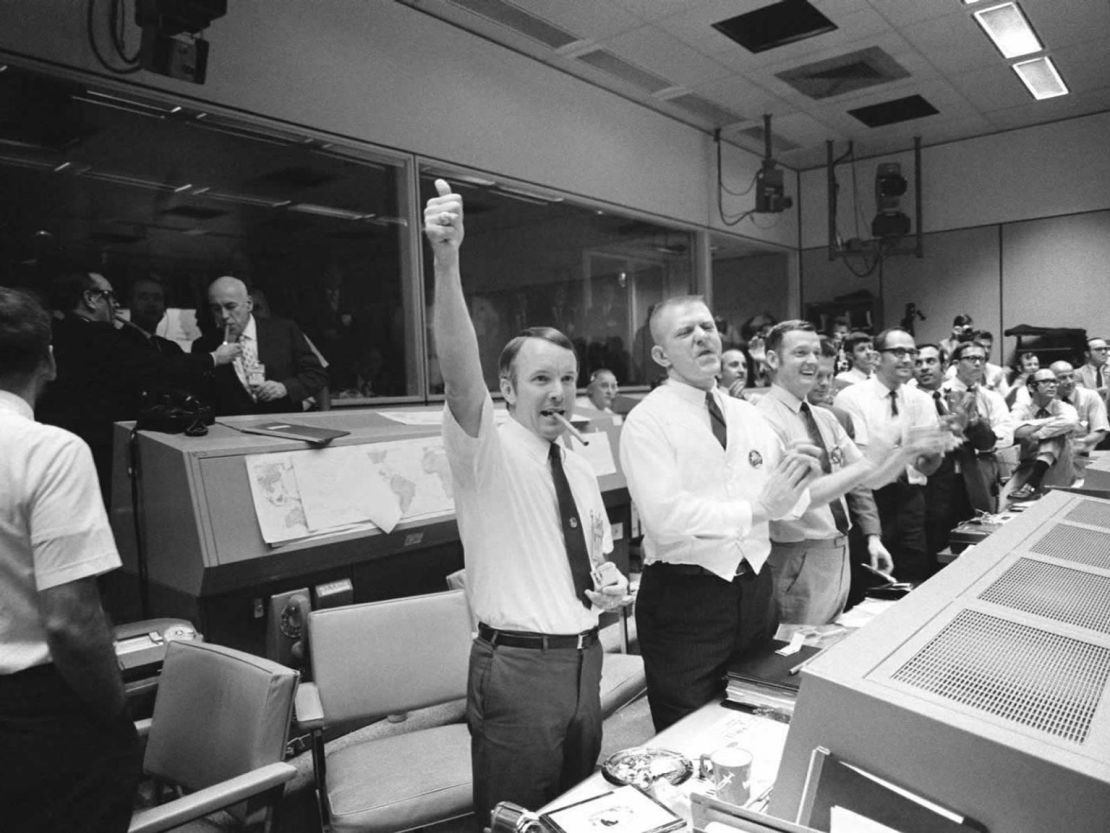
There was still uncertainty over the stability of the lunar lander on the moon’s surface, so there was no outburst of celebration. The teams kept moving on to the next phase of the mission. Everyone plugged in could hear what the crew were saying. They monitored the conversation to make sure the astronauts didn’t encounter any issues. But they also enjoyed every minute of Aldrin and Armstrong describing the moon.
“But even then I don’t think we realized the enormity of what we had done and that’s unfortunate,” Bostick said. “It was years later when most of us looked back and said, ‘Wow, did we really do that?’”
Years later, Bostick asked Armstrong what he would have done if Houston had called for an abort during the landing phase.
“And he said, ‘well, I probably would have said, “Say again Houston, I didn’t copy that” and gone ahead and landed.’ And he would have. And he would have done it. That’s how much confidence that I and the other people involved had in Neil Armstrong. He could do the impossible,” Bostick said.

Splashdown
Carpentier didn’t get to see the launch or the lunar landing because he was on an aircraft carrier. His job was to help recover the crew when they splashed down. He took Kennedy’s message to see the men safely returned to Earth to heart, and he was determined to see it through.
“My most important memory is watching them when they came out of the spacecraft in their biological isolation garments and getting in to the recovery rescue net they pulled up into the aircraft,” Carpentier said. “I’m helping them out of the rescue net, and I got a thumb’s up, one. Next guy, a thumb’s up, from the second. And a thumb’s up from the third. I will remember that forever. I breathed the most dramatic sigh of gratitude that has ever been breathed in the history of mankind. Because they returned safely to Earth. That was the goal.”
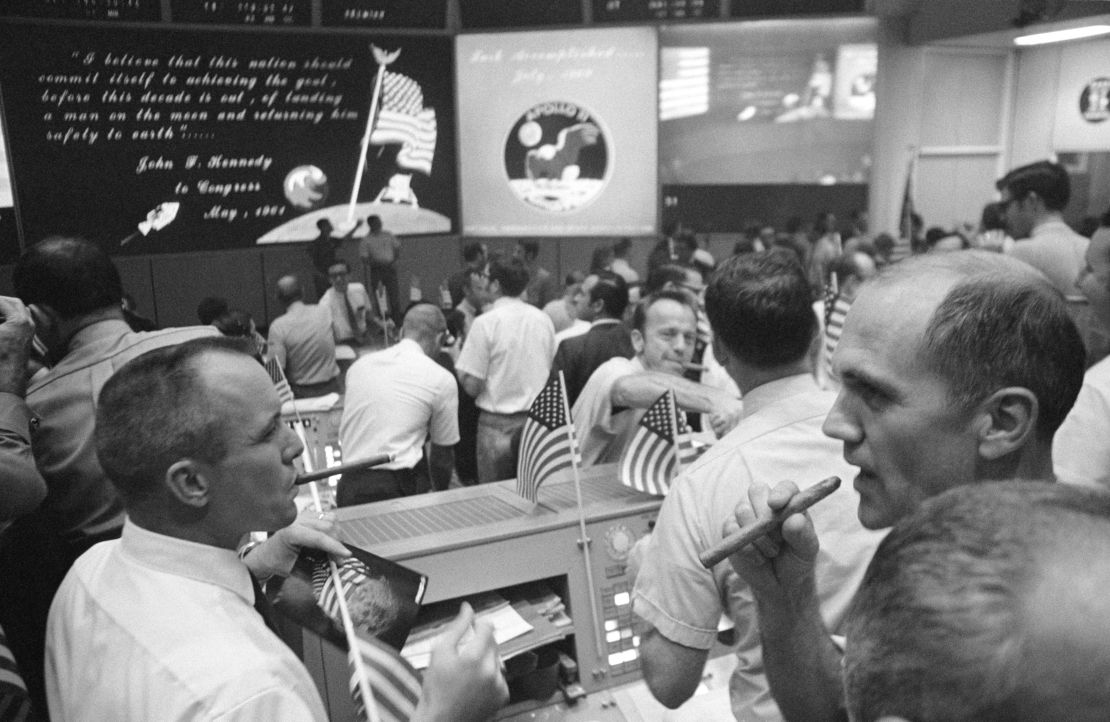
Carpentier remained in quarantine with the astronauts, conducting blood tests and collecting other samples to make sure they were healthy and to learn more about the effects of human spaceflight. Once they were released from quarantine to make sure no harmful bacteria had been brought back from the moon, the Apollo astronauts would embark on a world tour.
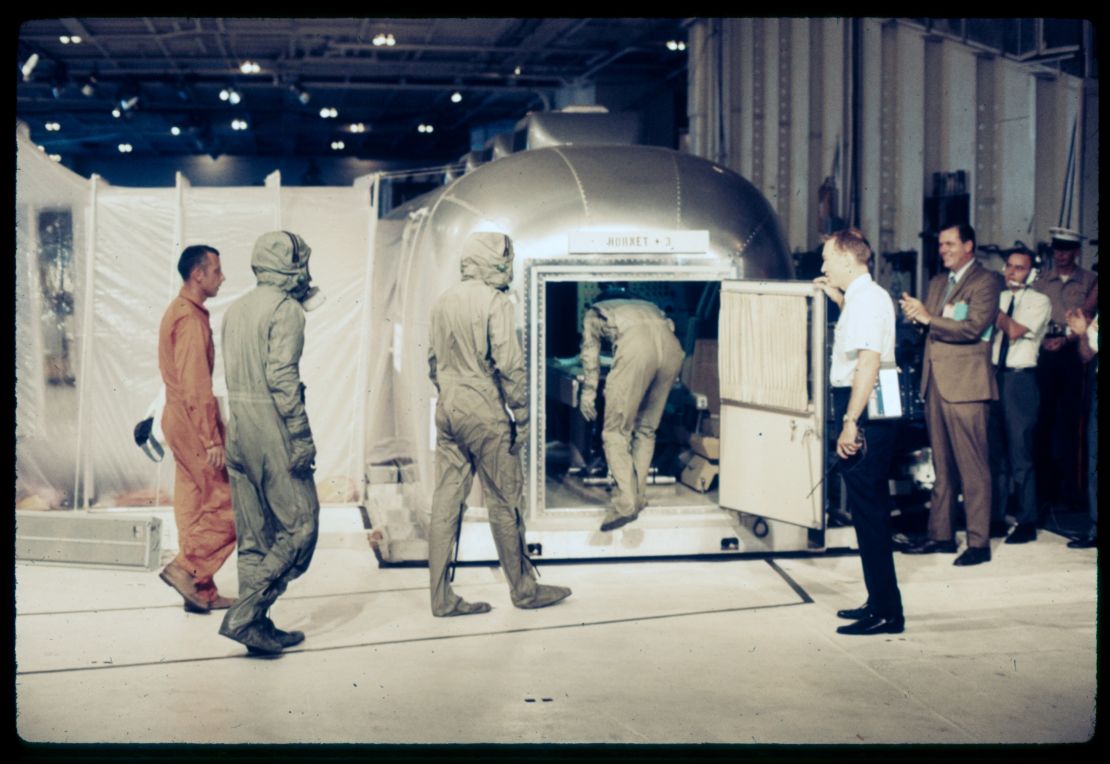
Elsewhere, the teams supporting Apollo had “one heck of a splashdown party,” continuing a tradition that has been observed after each successful mission. The next day, they would be planning for another upcoming mission. It was the continuous cycle of the space race and the Apollo program.
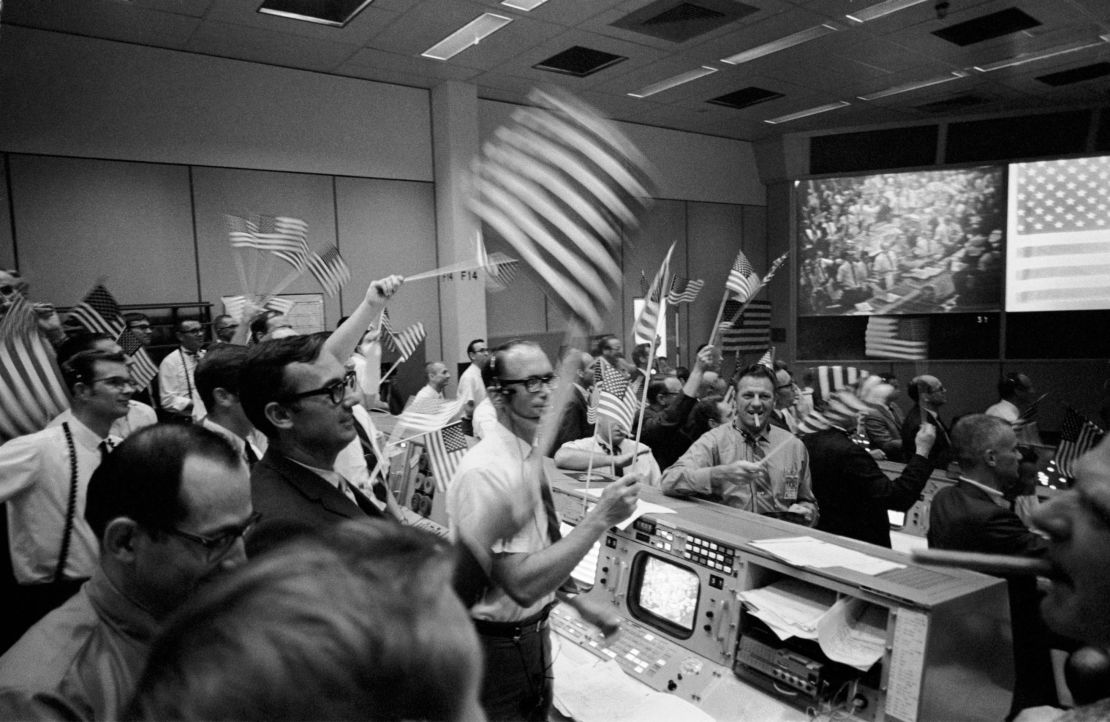
There was little time for the magnitude of what they had achieved to sink in for the Apollo teams. But it manifested in different ways.
The day after the landing, Fendell stopped at a place for breakfast on the way to work and bought a newspaper. The front page heralded the moon landing.
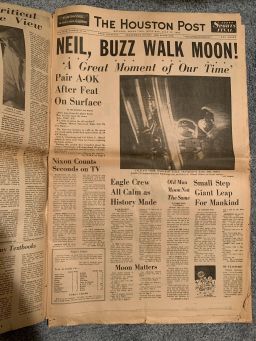
Fendell was drinking coffee and waiting for his food when two guys working at the gas station down the street came in. The two men were talking.
One said, “You know, I have never been so proud to be an American as I was yesterday.” The man talked about landing on Normandy Beach on D-Day. He said the feeling of pride from that event couldn’t be compared to the moon landing.
“I remember it hit me like a wall,” Fendell said. “I now realized what we had done. It really had not gotten to me because I was only involved with people I had worked with. I hadn’t talked to a bus driver; I hadn’t talked to my mother. I hadn’t talked to my uncle; I hadn’t talked to the plumber or whatever. And, it really then hit me. With that, I lost it, and I threw some money down, walked out in the car and started to cry.”
Remembrance
“I think clearly that Apollo 11, landing on the moon, was the most technical, peaceful achievement in mankind,” Bostick said. “And I was just very fortunate to play a small part in it and to be there and witness it. We did the impossible.”
Griffin recalls speaking with Glynn Lunney, a good friend and fellow flight director, about how lucky they were. “Gerry, do you realize they paid us to do that? If we could have afforded it, we would have paid them to be in that control center,” Lunney said to Griffin.
“We were a bunch of young people that happened to be at the right place, at the right time,” Griffin said.
Many of the Apollo team members thought NASA would have landed on Mars by now or continued going to the moon.
“But we only scratched the surface and there’s a lot more that can be done there,” Bostick said. “I think that our vision should not be limited to how far our eyes can see but only to how far that our minds can dream.”
Working on restoring Apollo’s Mission Control the last few years, the flight controllers hope that the restoration and the anniversary will renew a spark of interest in the American public. They want it to inspire younger generations to push for the impossible, as they did 50 years ago.

“Many have left us, and for the Apollo generation, our time is rapidly coming to an end,” Kranz said. “I pray that room will continue to inspire and drive the current and future teams to complete the work we began and carry our nation forward to return to the moon and beyond.”
Samantha Bresnahan contributed to this report.
